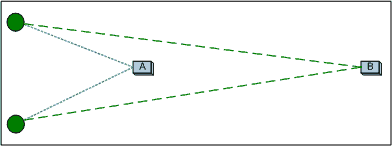Infinity represents one of the characteristics of God — a being with no beginning and no end, existing completely outside of time. Not always an easy concept to understand, but James provides a surprising scientific and technical explanation in his letter.
Every good gift and every perfect gift is from above, and cometh down from the Father of lights, with whom is no variableness, neither shadow of turning. (James 1:17 KJV)
Variableness in Greek is παραλλαγή (parallagē, Strongs 3883), and only appears in the New Testament here. It’s a relative to parallax.
Parallax is an apparent displacement or difference in the apparent position of an object viewed along two different lines of sight, and is measured by the angle or semi-angle of inclination between those two lines. The term is derived from the Greek παράλλαξις (parallaxis), meaning “alteration.” Nearby objects have a larger parallax than more distant objects when observed from different positions, so parallax can be used to determine distances.
The easiest example comes from your eyes (don’t laugh at the illustration, mathematicians aren’t graphic artists).

The green circles on the left represent your eyes. As you can see, the nearer box makes a larger angle than the box further away. Using a process called triangulation it’s easy to determine the distance to either box, or the distance between the boxes.
But that’s all for finite distances, what if, as James says, God doesn’t have any variableness or parallax to Him? Then He exists at infinity. James’ description of God existing without parallax uses a mathematical method to describe an infinite God.